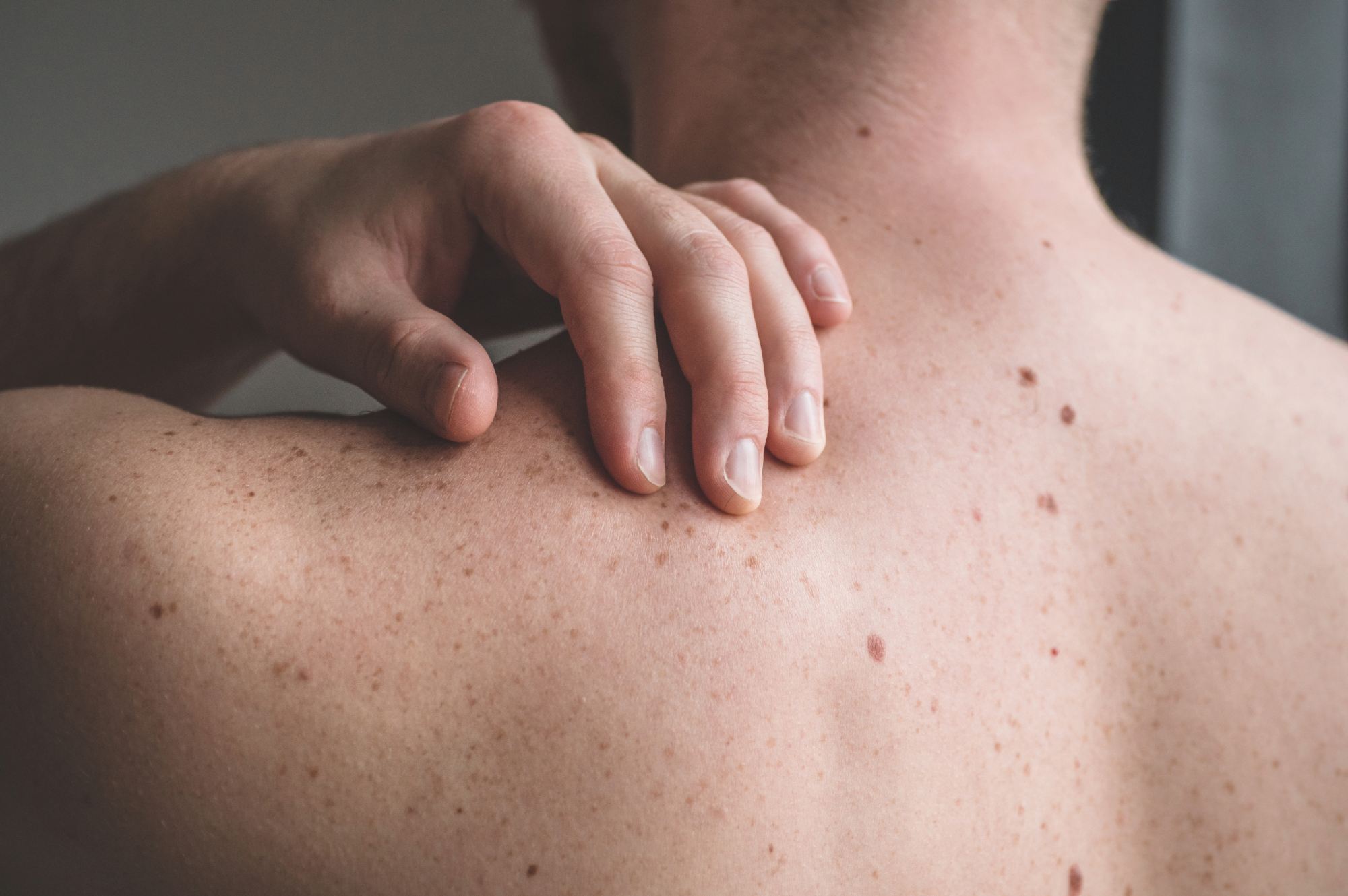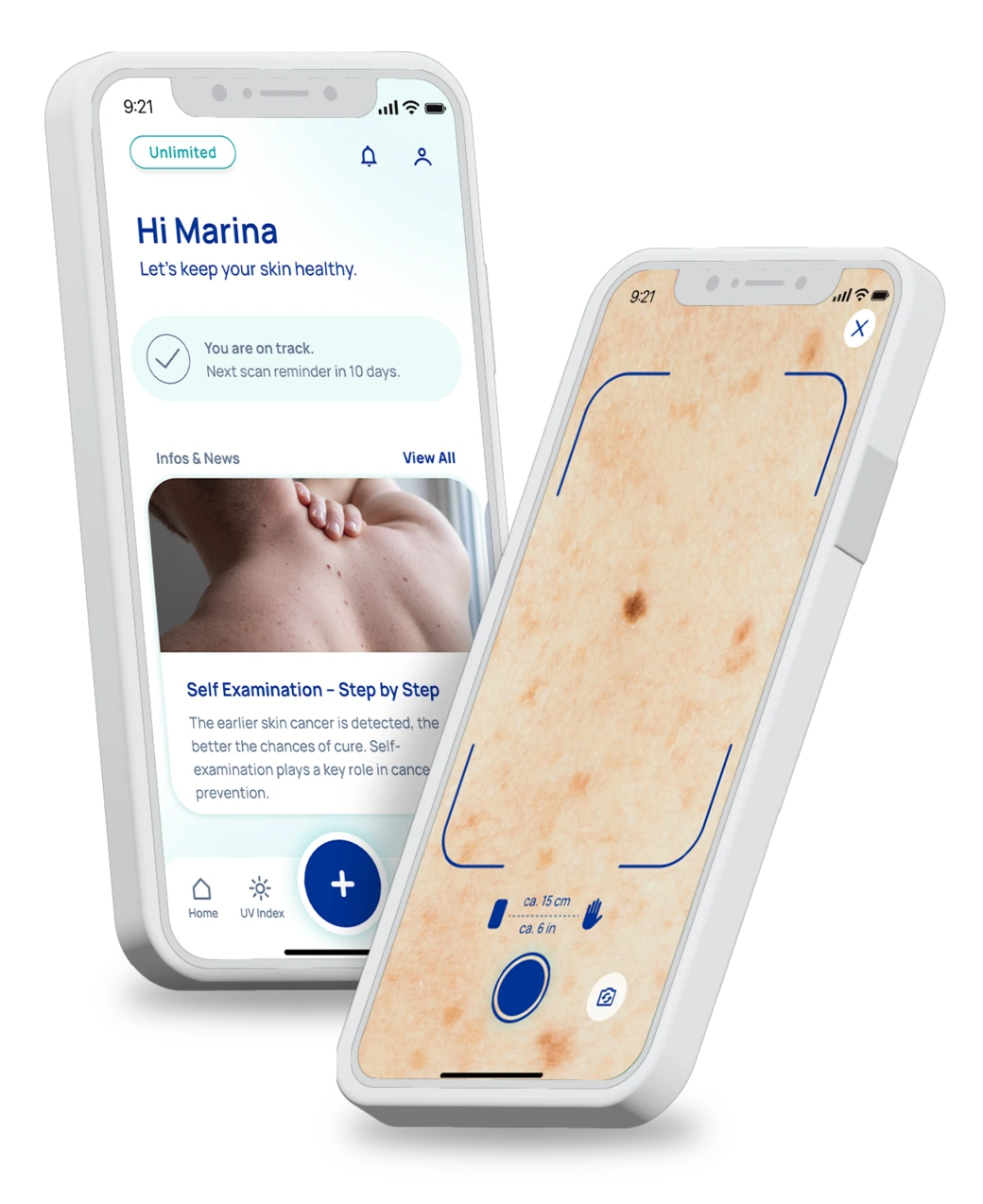
SkinScreener aims to increase the amount of early diagnoses skin cancer. However, it all starts with skin cancer prevention. We all heard it is bad to burn our skin in the sun, but do we truly understand why? Did you know a tan is actually a sign that the skin has been damaged and is trying to protect itself?
What is sunburn?
Sunburn is skin damage and your body’s response to try to repair it – it’s a short-term warning for potential long-term DNA damage, and is a clear sign that the DNA in your skin cells has been damaged by too much UV radiation. Getting sunburn, just once every 2 years, can triple your risk of melanoma skin cancer.
What is SPF?
SPF stands for ‘sun protection factor’, although the SPF is more accurately the sun burn protection factor, as it primarily shows the level of protection against UVB, not the protection against UVA. SPFs are rated on a scale of 2-50+ based on the level of protection they offer, with ratings between 2 to 14 forming the least protected end of the spectrum and ratings of 50+ offering the strongest forms of UVB protection.
Broad Spectrum
Broad spectrum SPF refers to sunscreens that protect the skin from both UVA and UVB rays. Even with a high SPF (sun protection factor), if a sunscreen isn’t broad spectrum, you won’t be protected from all UVA rays.
UV radiation
UV radiation is part of the natural energy produced by the sun. On the electromagnetic spectrum, UV light has shorter wavelengths than visible light, so your eyes can’t see UV, but your skin can feel it. Tanning beds also emit UV radiation.
Two types of UV light are proven to contribute to the risk for skin cancer:
While UVA and UVB rays differ in how they affect the skin, they both do harm. Unprotected exposure to UVA and UVB damages the DNA in skin cells, producing genetic defects, or mutations, that can lead to skin cancer and premature aging. UV rays can also cause eye damage, including cataracts and eyelid cancers.
What is a tan?
The dark pigment that gives the skin its natural colour is called melanin. Melanin is made in the skin by pigment cells called melanocytes. After our skin has been exposed to sunlight the melanocytes produce more melanin in attempt to absorb further UV radiation, and so the skin becomes darker. A tan is actually a sign that the skin has been damaged and is trying to protect itself.
How should I apply sunscreen?
The overall message in terms of sunscreen use is “more is better.” Apply sunscreen 15 to 30 minutes before going out in the sun to allow it to dry, and then again shortly after heading outdoors to cover any missed patches and to make sure you’re wearing a sufficient layer. ‘Water resistance’ is tested by the ability of a sunscreen to retain its sun protection properties following two 20 minute intervals (40 minutes total) of moderate activity in water. Another important factor is the reflection of the sun’s rays, which can greatly increase the power of the radiation, by the following percentages: snow up to 85% increase, sand up to 17% increase, water up to 5% increase. Exposure to water, sweating, towel drying and any form of abrasion can remove sun protectors from the surface of the skin, keep this in mind.
Enjoy being outdoors
Despite the risk factors, you can safely, happily enjoy the great outdoors by protecting your skin against UV exposure with broad-spectrum sunscreen and sun-safe clothing, hats and eyewear. You can also consider UV window film for your home and car. Make it a way of life. Protect yourself every day, even when it’s cloudy.
Foto from National Cancer Institute via
